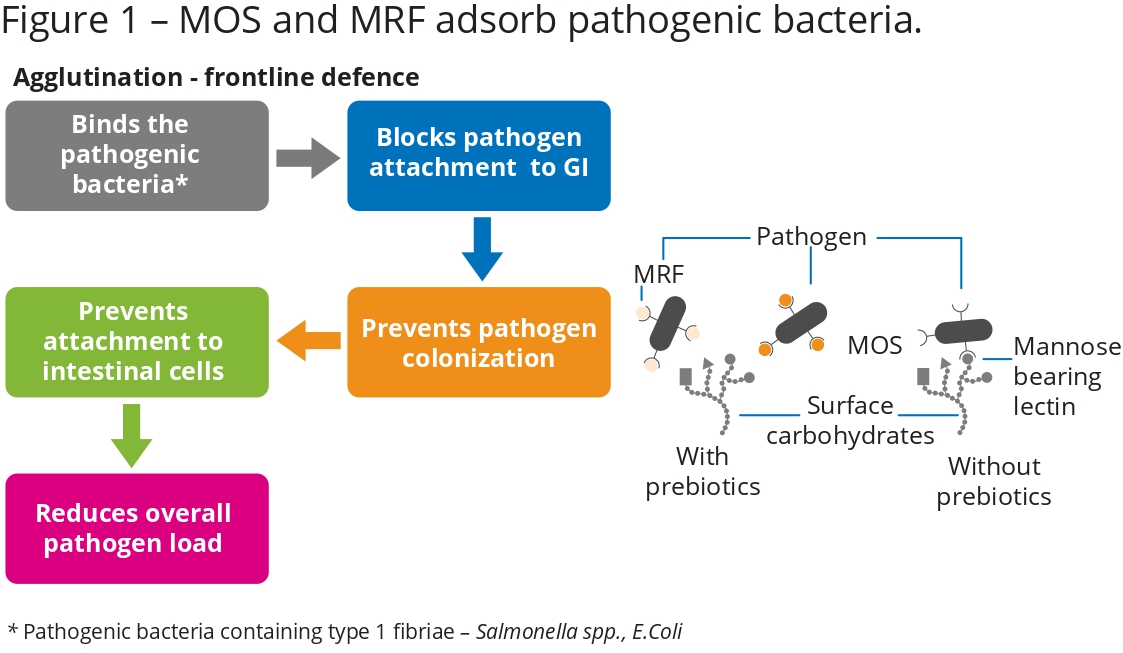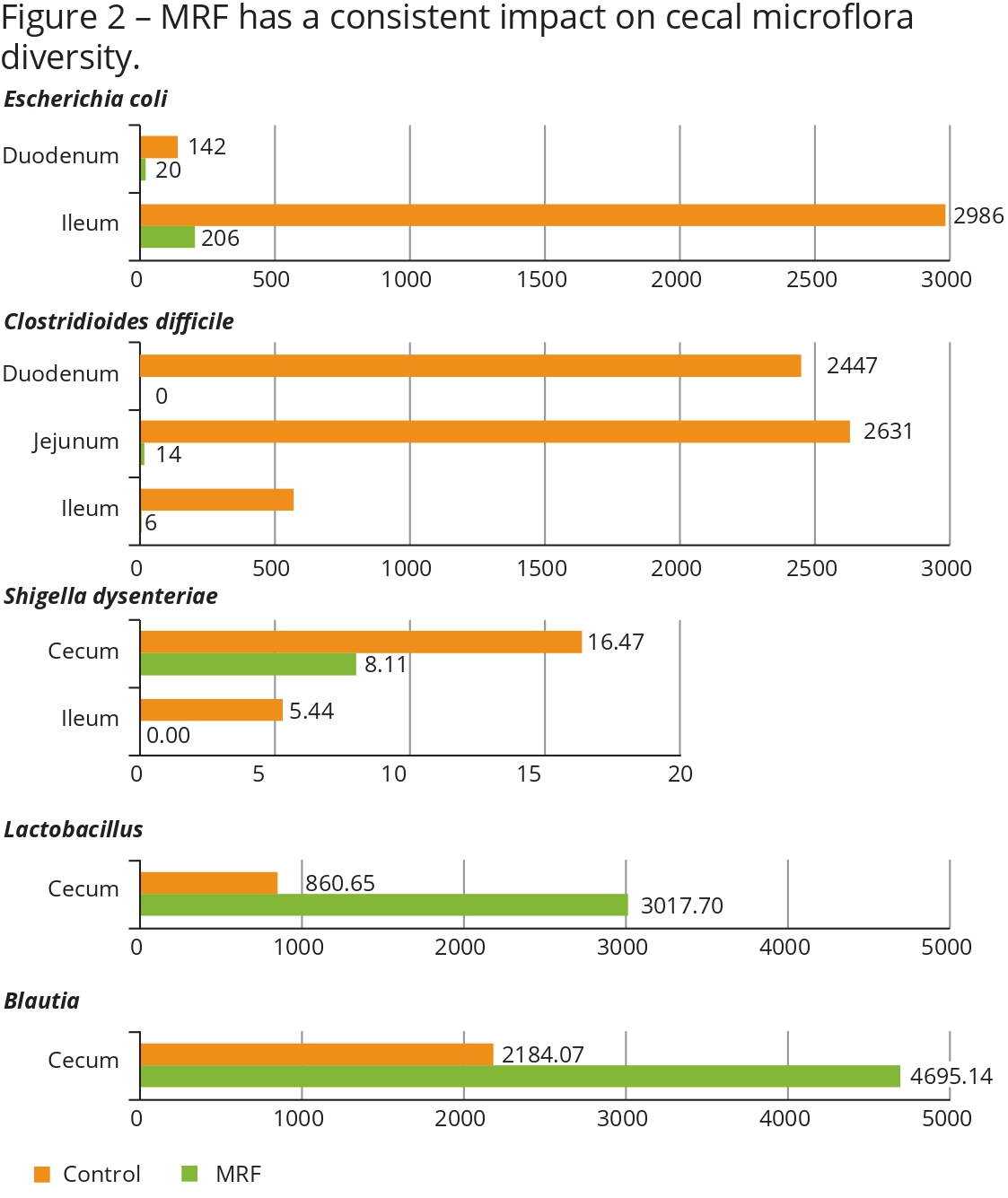Microbial diversity for better food safety

With poultry being one of the most consumed meats worldwide and a production of 86.3 million tonnes of eggs worldwide, it is clear that poultry products are an important source of protein and nutrition. However, raw or undercooked chicken and eggs can be contaminated with pathogens that cause foodborne diseases, such as Campylobacter and Salmonella.
Campylobacteriosis and salmonellosis – the conditions that result from Campylobacter and Salmonella contamination – account for approximately 90% of all reported foodborne disease cases, causing diarrhoea, fever and stomach cramps. This is not only a major food safety issue and public health concern but also a major economic burden. The European Food Safety Authority (EFSA) estimates the cost of these illnesses in the EU at around € 2.4 billion and € 3 billion a year, respectively. It is vital, therefore, that Campylobacter, Salmonella and other pathogenic bacteria in poultry are controlled to stop their spread to the human population.
This will require a number of interventions, as pathogens can be introduced by various routes. Excellent on-farm biosecurity, widespread vaccination, improved slaughter hygiene, competitive exclusion products and up-to-date technology in processing plants can all play a role, along with educating the public about best practices for raw meat handling and the importance of cooking meat thoroughly. Optimal feed formulations and additives will also be vital, allowing us to address the problem both directly and indirectly, as described below.
Direct route, excluding and binding
A varied and complex gut microbiome plays a vital role in the digestion and absorption of nutrients, the immune system and the control of pathogens. The diversity and balance of the gut microbiome are affected by many factors, including diet, environment, age and stressors on the bird. An imbalance in the microbiome, known as dysbiosis, can result in pathogenic colonisation and proliferation that can lead to gut damage, reduced absorption of nutrients and impaired performance.

Alltech’s proprietary yeast mannan-rich fraction (MRF) is a unique, second-generation bioactive product derived from Saccharomyces cerevisiae that has been shown to agglutinate or bind to bacteria with type 1 fimbriae. For some pathogenic bacteria, including Escherichia coli (E. coli) and Salmonella, to colonise and infect the gut, they must first attach to mannose receptors on the gut cell wall via these type 1 fimbriae. When MRF adheres to these type 1 fimbriated bacteria, this prevents them from attaching to the gastro-intestinal cell wall, preventing pathogen colonisation. This reduces inflammation and tissue damage and lessens the overall pathogen load.
All these benefits make MRF effective against foodborne pathogens, especially Salmonella, as MRF has been shown to adhere to a wide range of Salmonella isolates. This is important because Salmonella controls need to be broad spectrum, as the nature and prevalence of Salmonella isolates varies and changes over time. Girgis and others reported that MRF supplementation in layer diets significantly reduced both the prevalence of Salmonella in the ovaries and its concentration in the cecum, making MRF supplementation a useful strategy for reducing the risk of eggshell contamination.
Indirect route, establishing a healthy gut
A diverse and balanced gut microbiome can reduce the load of pathogenic bacteria through a process called competitive exclusion, where bacterial species compete with one another for the available nutrients and mucosal adhesion sites. When multiple types of beneficial bacteria are introduced and encouraged to thrive, they keep harmful bacteria from multiplying and colonising the gut. This enhances barrier function, reduces inflammation and supports the immune system.
MRF has been shown to have a consistent impact on gut microbiota, promoting bacterial diversity and significantly changing the composition of the bacterial community. These findings echoed those of Corrigan and others, who found in 2018 that MRF had a consistent impact on cecal microflora diversity, with supplemented Bacteroidetes appearing to replace Firmicutes.

MRF has also been shown to reduce E. coli, Clostridioides difficile, Shigella dysenteriae, Salmonella enterica and various other species of Campylobacter in poultry. This suggests that MRF, in enhancing the gut’s resistance to pathogen colonisation, can have a beneficial effect on food chain integrity and safety.
It is especially notable that MRF has the ability both to reduce the levels of ‘bad’ bacteria as well as improve the levels of ‘good’ bacteria, or probiotics, including Lactobacillus and Blautia. It was also shown that MRF, through influencing the microbiome, stimulates the production of a short-chain fatty acid (SCFA) called butyrate. SCFA can be used as an energy source, decrease gut pH and has bacteriostatic properties that can reduce the prevalence of foodborne pathogens.
Reducing antibiotic resistance
An additional concern for food safety is the level of antimicrobial resistance (AMR) harboured in the bacteria that cause foodborne diseases. AMR is when antimicrobial drugs stop working effectively on certain bacteria because those bacteria have become resistant to the treatment. This makes any infection with the resistant bacteria harder to treat. AMR is a food safety issue because AMR bacteria can transfer from animals to humans through the food chain. In 2019, 1.27 million deaths globally were directly attributable to drug resistance. The burden on economies and health systems is considerable. In addition to the deaths, AMR leads to extended hospital stays and more costly medicines and intensive care.
One of the drivers of AMR is the misuse and overuse of antimicrobial drugs in animal production. This has led many countries to ban the use of antibiotic growth promoters in animal feeds. However, such bans are not enough to stop the increased emergence of resistant pathogens because pathogens can also acquire resistance by exchanging genetic material with other bacteria or through genetic mutation. Therefore, it is critical to find other ways to reduce AMR and increase bacterial sensitivity to antibiotics.
As previously indicated, MRF can bind to pathogens like Salmonella and E. coli. However, Alltech research has shown that there is much more to these interactions, particularly regarding resistant bacteria. In a series of publications MRF has been shown to reduce the growth of resistant E. coli and enhance antibiotic sensitivity in resistant E. coli making them more susceptible, meaning MRF-enhanced antibiotic efficiency. This increased effectiveness of the antibiotic used with MRF could result in a reduction in the level of antibiotic-resistant organisms in birds, in the environment and in humans.
Holistic approach
The food safety of meat and eggs is extremely important in reducing foodborne infections. Therefore, it is vital to develop a robust, holistic approach to food safety in poultry production. To gain maximal control over these bacteria and AMR, a complete approach will support the diversity of the bird’s gut microbiome, thus reducing the load of zoonotic bacteria, enhancing defence against pathogen colonisation and increasing sensitivity to antibiotics.












